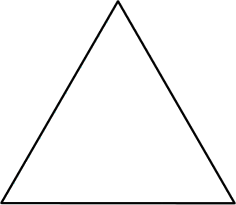Vitamin D and Omega-3 Slow Aging
Previously in DO-HEALTH (including all 2,157 participants), we reported that omega-3 alone reduced the rate of infections by 13% (ref. 22) and the rate of falls by 10% (ref. 23), and all three interventions combined showed a significant additive benefit on reducing prefrailty by 39% (ref. 24) and incident invasive cancer by 61% (ref. 25) over a 3-year follow-up. The aim of the DNAm analysis in DO-HEALTH Bio-Age was to assess the effects of the interventions at the molecular level. Three of the four DNAm measures showed the clearest signal for omega-3, highlighting a specific and notable epigenetic response. This specificity is encouraging and supports the idea that targeted nutritional strategies can have distinct epigenetic aging effects. Moreover, the observation that individuals with lower starting levels of omega-3 exhibited larger epigenetic shifts further strengthens the case for personalized approaches. This suggests that baseline nutritional status may modulate the extent of epigenetic responsiveness, emphasizing the potential of omega-3 as a targeted intervention to influence DNAm age and, by extension, biological aging. Furthermore, the PhenoAge findings indicate additive benefits of omega-3 with vitamin D and exercise, extending the evidence from incident invasive cancer and prefrailty in DO-HEALTH to the molecular level. Additional support for an additive benefit of the three interventions comes from four of the seven GrimAge-based epigenetic biomarkers examined in our study (DNAm PAI-1, B2M, TIMP-1 and GDF-15).
Similar to recent data from the CALERIE trial9, the treatment effects in DO-HEALTH Bio-Age varied across the DNAm measures of aging we analyzed. Across the epigenetic clocks included in our analyses, the effect was the strongest in the second-generation clocks and DunedinPACE, consistent with evidence of lifestyle effects on these clocks from prior observational studies5,9,30,31. In the CALERIE trial, caloric restriction slowed the pace of aging as measured by DunedinPACE but did not affect PhenoAge, GrimAge or the first-generation clocks9. In DO-HEALTH, we documented consistent effects of omega-3 treatment across PC-PhenoAge, GrimAge2 and DunedinPACE, as well as in three of the seven GrimAge plasma proteins (PAI-1, leptin and TIMP-1). We also documented an additive effect of the three treatments (omega-3, vitamin D and exercise) on PC-PhenoAge and four of the seven GrimAge plasma proteins (PAI-1, B2M, TIMP-1 and GDF-15).
The CALERIE intervention induced a 2–3% reduction in the pace of aging as measured by DunedinPACE. The effect of the DO-HEALTH interventions on DunedinPACE was somewhat more modest (about a 1% reduction in the pace of aging). However, the reductions in PhenoAge and GrimAge2 by 2.9–3.8 months over 3 years were larger. Further, even small changes in biological aging, if sustained, may have relevant effects on population health32,33,34.
Notes:
Folksonomies: aging longevity supplements supplementation
Taxonomies:
/health and fitness/aging (0.970452)
/health and fitness/disease (0.784411)
/education/homework and study tips (0.746150)
Concepts:
Cancer (0.926467): dbpedia_resource
Vitamin D (0.921019): dbpedia_resource
Observation (0.899766): dbpedia_resource
Health (0.768505): dbpedia_resource
Vitamin (0.762719): dbpedia_resource
Biology (0.652567): dbpedia_resource
Nutrition (0.643032): dbpedia_resource
Physical exercise (0.620362): dbpedia_resource





